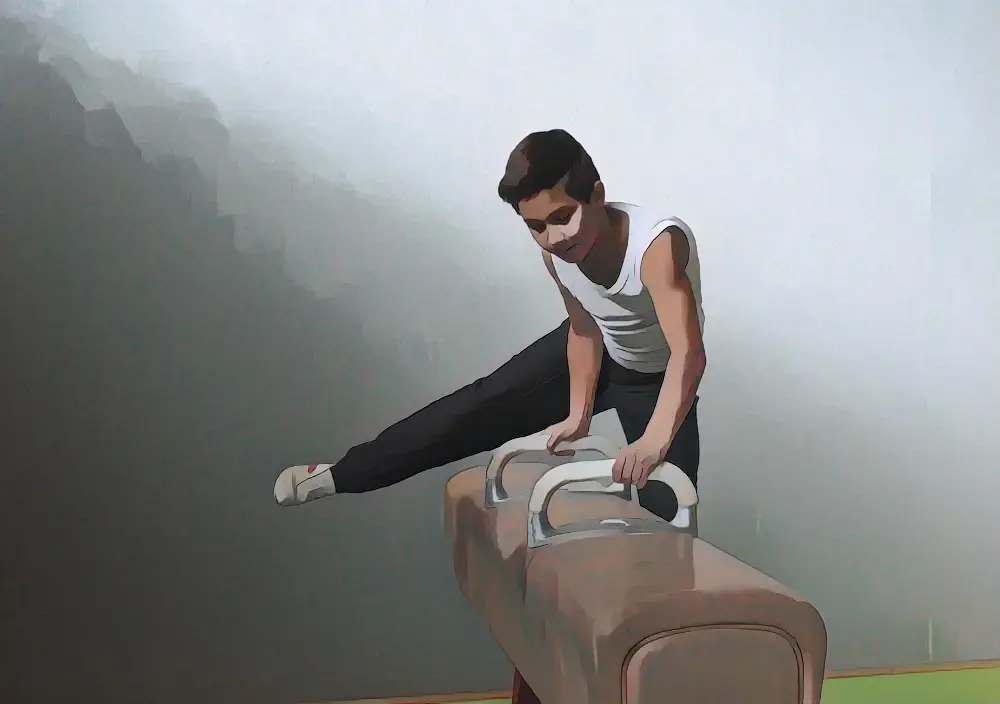Physical activities like parkour workouts, freerunning, and obstacle courses have gained immense popularity in recent years thanks to platforms like American Ninja Warrior and the parkour movement. They offer individuals of all ages an exhilarating way to stay fit and engage in challenges. While these activities often appear similar, there are distinct differences that set them apart. Parkour training emphasizes efficient movement and navigating obstacles quickly, while freerunning adds a creative flair with acrobatic and stylish movements.
On the other hand, obstacle courses provide a structured environment with challenges designed to test strength, agility, and problem-solving skills. For kids seeking the adrenaline rush of these activities near Chicago, there are numerous options available, including dedicated kids' obstacle courses that offer a safe and exciting experience for young adventurers.
Parkour vs. Freerunning

Parkour and freerunning are often used interchangeably, but they're distinct disciplines with different philosophies and techniques.
Parkour originally started as a form of military training and these exercises focus on efficient and fluid traversal of obstacles using only the human body. It emphasizes speed, precision, and getting from point A to point B in the most direct way possible.
Freerunning, on the other hand, takes on a different exercise philosophy. It is a more expressive and creative form of movement that incorporates acrobatics and flips and allows practitioners to explore their environment in a freer and more artistic manner.
While both parkour and freerunning require similar physical skills such as strength, flexibility, and balance, the approaches and mentalities behind them are different. American parkour is about practicality and efficiency, while freerunning is about self-expression and creativity. Freerunning and parkour can be practiced together or separately, depending on the individual's preferences and goals.
Parkour vs. Obstacle Course
Ignite Your Child's Spirit

Watch your child conquer challenges, build resilience, and have a blast at Hot Ground Gym's thrilling obstacle courses. Enroll now for an exhilarating adventure!
Obstacle classes in Chicago offer a host of benefits, both physically and mentally. These classes provide a unique and challenging workout experience that incorporates elements of strength training, cardiovascular exercise, and problem-solving skills for the ultimate test of athletic discipline. The obstacles themselves vary, ranging from ropes and walls to balance beams and monkey bars. Participating in day-off obstacle course training can help improve strength, endurance, agility, and flexibility. Plus, obstacle classes often include mental challenges and require participants to strategize and adapt to various physical and mental obstacles.
However, obstacles shouldn't be confused with solely being associated with Ninja Warrior classes. While Ninja Warrior training is a popular obstacle-based competition, it is separate from disciplines like parkour or military obstacle course training. Each activity has its distinct focus and goals, catering to different interests and skill sets.
Parkour vs. Gymnastics

Parkour and gymnastics are separate disciplines that showcase remarkable physical abilities but differ in their focus and techniques. Gymnastics is a well-established sport known for precise routines and performances that involve floor exercises, balance beam, parallel bars, and more. It focuses on grace, athleticism, and technical execution, particularly emphasizing acrobatics, flips, and aerial movements.
In contrast, parkour focuses on efficient movement and navigating obstacles, often in urban environments, with speed and fluidity. This holistic training discipline requires parkour skills, such as adaptability and quick thinking, utilizing vaults, jumps, and climbing techniques to overcome obstacles in the most direct way possible.
Climbing vs. Parkour
Supercharge Your Child's Adventure

Supercharge your child's adventure with Hot Ground Gym's dynamic obstacle courses. Develop strength, agility, and teamwork skills while having a blast. Don't miss out - enroll today!
While both involve navigating obstacles, there are key differences between parkour and climbing. Parkour focuses on efficient movement and a combination of jumping, vaulting, and climbing techniques to overcome obstacles with speed and precision. Parkour athletes, known as traceurs, develop a unique set of skills and learn parkour techniques, such as a parkour roll or cat leap, that enable them to traverse urban landscapes with fluidity and adaptability.
On the other hand, climbing focuses on ascending vertical surfaces, such as rock walls or indoor climbing walls. It requires technique, strength, and endurance to conquer challenging routes and reach the top.
Martial Arts vs. Parkour

Martial arts and parkour may both involve physical movement and discipline, but they're distinct practices with different focuses. Martial arts encompasses a wide range of traditional and modern combat disciplines that emphasize self-defense, discipline, and physical and mental control. It involves training discipline and mastering specific techniques, forms, and strategies.
Martial arts typically follow a structured curriculum and progression, while the parkour community often seeks freer exploration and creativity. Parkour classes provide a platform for individuals to learn and develop this unique movement discipline in a safe and controlled environment.
Conquer Physical and Mental Obstacles from Hot Ground Gym!

Whether you're embarking on a new physical fitness journey or seeking an exhilarating adventure, exploring these various physical activities can lead to growth, enjoyment, and new experiences. If you're interested in trying out these activities and taking on a new approach to the physical world, Hot Ground Gym offers dedicated obstacle classes for kids and teens in Chicago as a safe, exciting option. Contact us today and consider classes to learn and develop this unique movement discipline!







